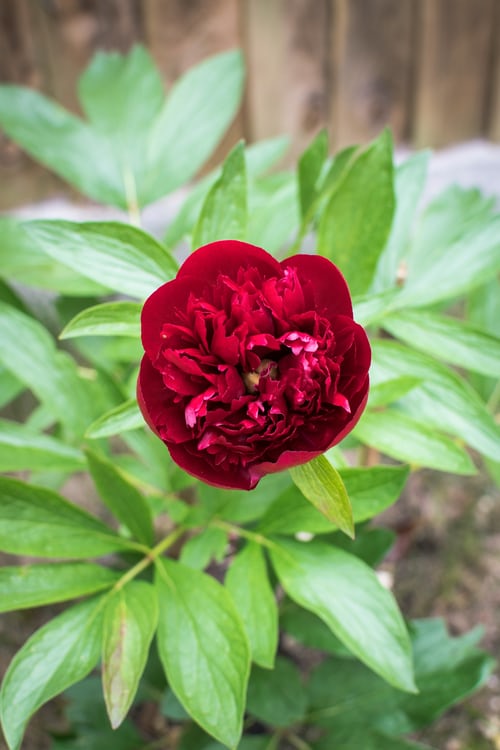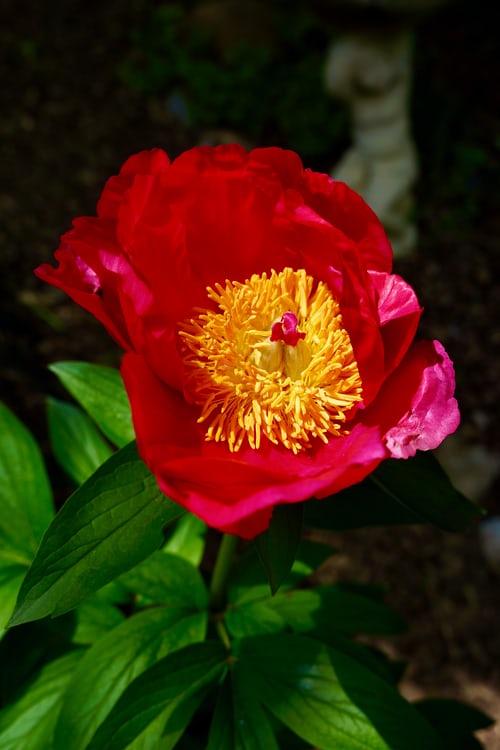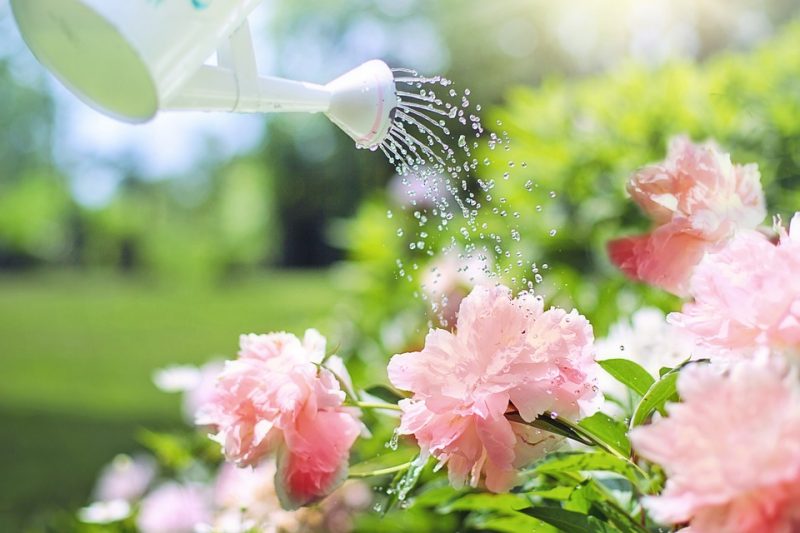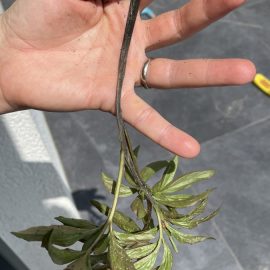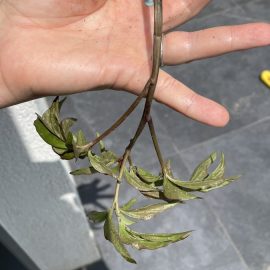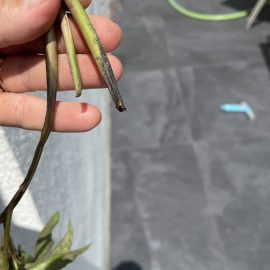Peony, planting guide and care work
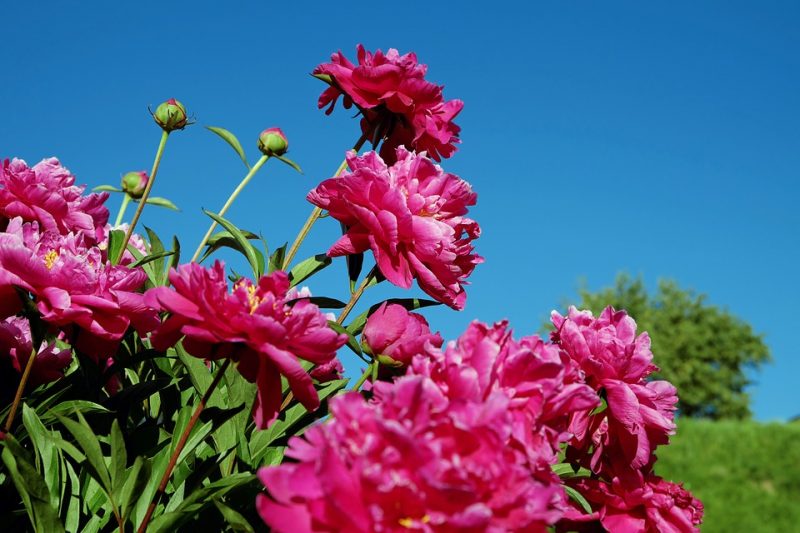
Peony is a perennial shrub-looking plant in the Paeoniaceae botanical family, genus Paeonia. It is frequently cultivated in gardens, courtyards, parks or other green spaces, its lush and pleasantly fragrant flowers being much loved. It blooms annually, in early spring. The large, intense green leaves are also decorative. Additionally, peony is widely grown for its flowers, which are used in various floral arrangements and bouquets.
Species and varieties
There are numerous herbaceous species of peonies, as well as several woody species (shrubs). Most often we find the following herbaceous species:
Paeonia officinalis (common peony)
It is a species native to the mountainous areas of southern Europe. It has the characteristic appearance of a thick bush, with heights of up to approx. 80 cm. The leaves are large, pinnately compound, intense green, and are alternately arranged on the stems. The flowers are solitary, terminal, large. The petals are bright red or pink.
Subspecies:
- Paeonia officinalis subsp. microcarpa;
- Paeonia officinalis subsp. banatica – endemic to southwestern Romania, southern Hungary, Serbia and Bosnia;
- Paeonia officinalis subsp. officinalis;
- Paeonia officinalis subsp. italica.
Varieties:
- Paeonia officinalis ‘Rubra Plena’ – with large, red flowers;
- Paeonia officinalis ‘Rosea Plena’ – with large, pink flowers;
- Paeonia officinalis ‘Alba Plena’ – with large, white flowers, etc.
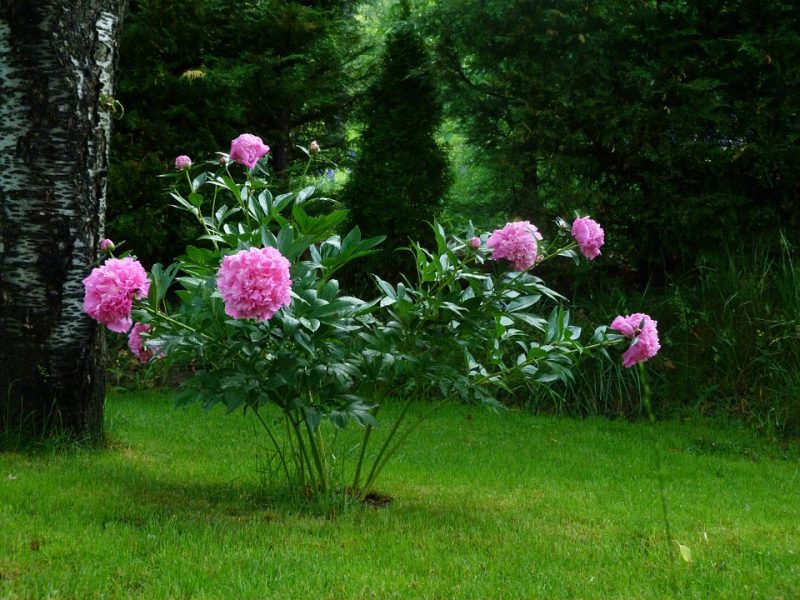
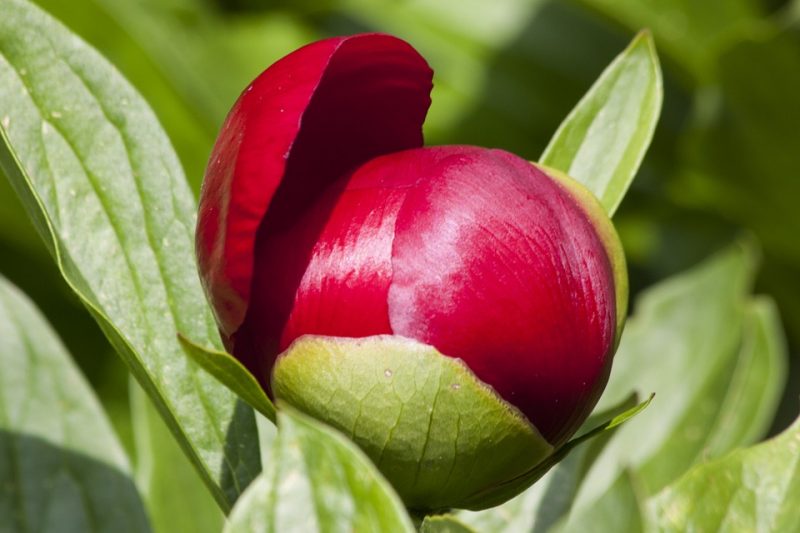
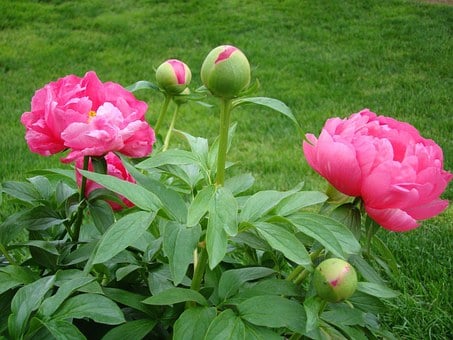
Paeonia lactiflora (Chinese peony)
Species native to East Asia, widespread in the natural area both at low altitudes and in the mountains and Alps. It can have heights of approx. 1 m. The leaves are lobed, large, up to 16 cm long and up to 6 cm wide. One stem has 3-4 terminal flowers, each with 9-13 white or pink petals.
Varieties:
- Paeonia lactiflora ‘Sarah Bernhardt’ – with pink flowers;
- Paeonia lactiflora ‘Primevere’ – with white and yellow flowers;
- Paeonia lactiflora ‘Barbara’ – with magenta pink flowers and fringed petals, etc.
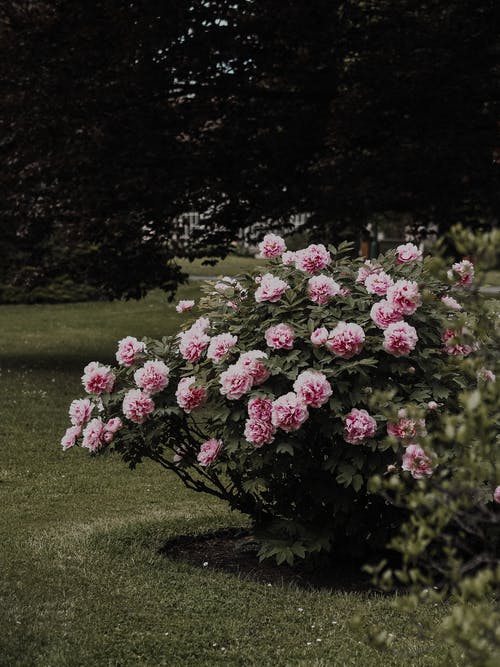
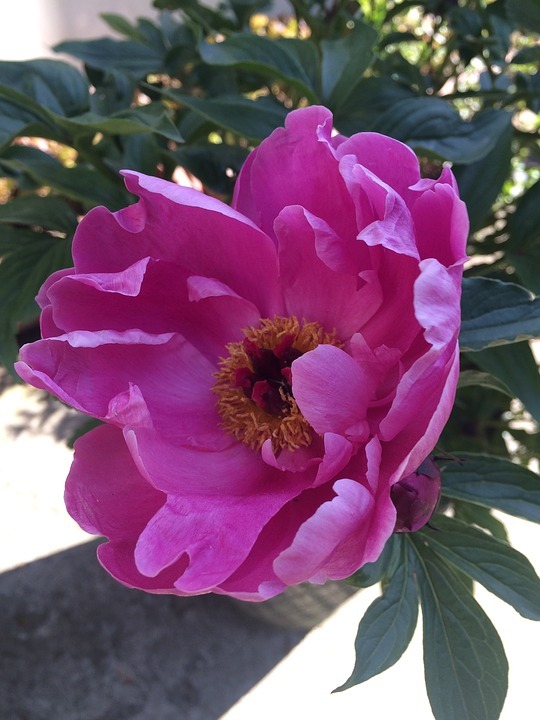
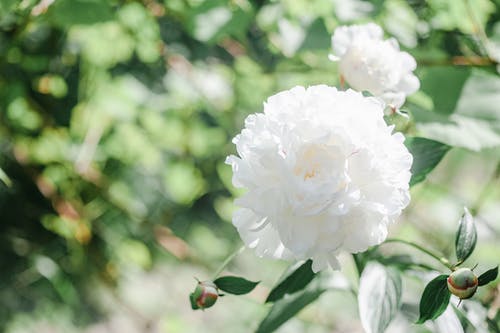
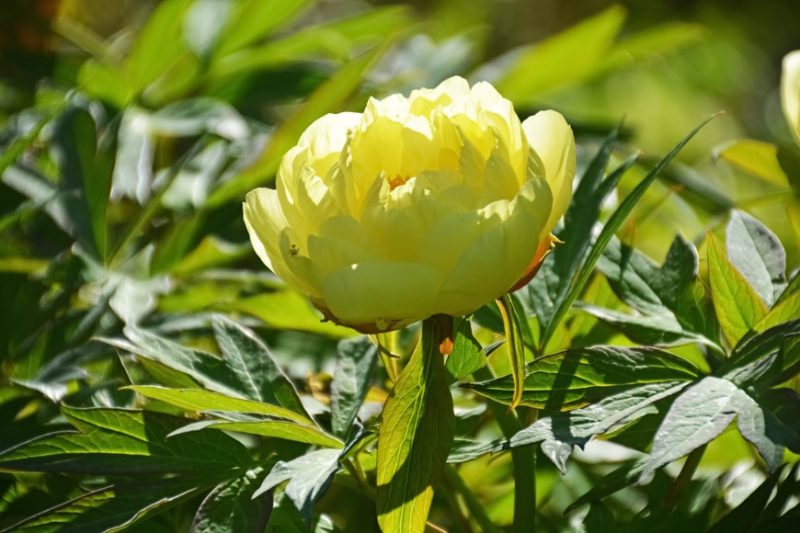
Paeonia peregrina
It is a species which is 30-70 cm tall, native to southeastern Europe and Turkey, respectively. It has lobed leaves and terminal, solitary flowers, with 7-10 red petals.
Varieties:
- Paeonia peregrina var. romanica (Romanian peony) – endemic species, found in the spontaneous flora of Dobrogea, Muntenia and Moldova, with red flowers.
Paeonia tenuifolia (fernleaf peony)
Species native to southeastern Europe, which grows in the spontaneous flora at low altitudes. It has stems with heights between 20 and 60 cm, lobed leaves and flowers with 6-8 red petals.
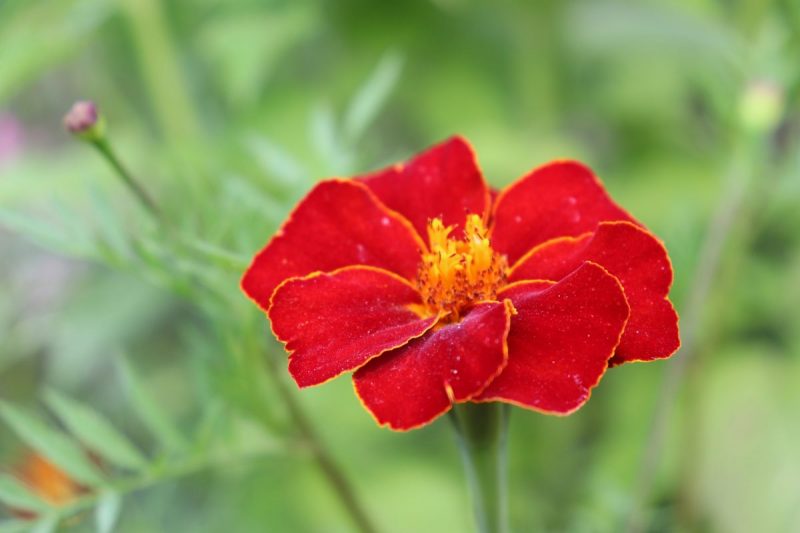
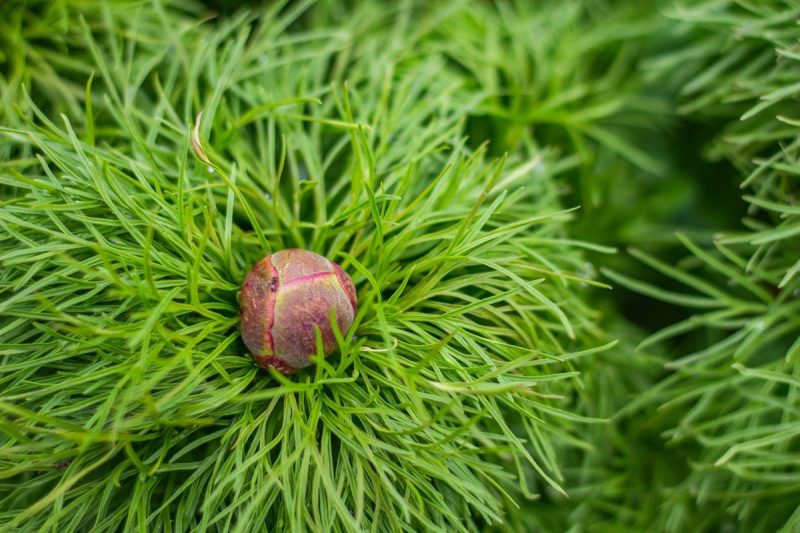
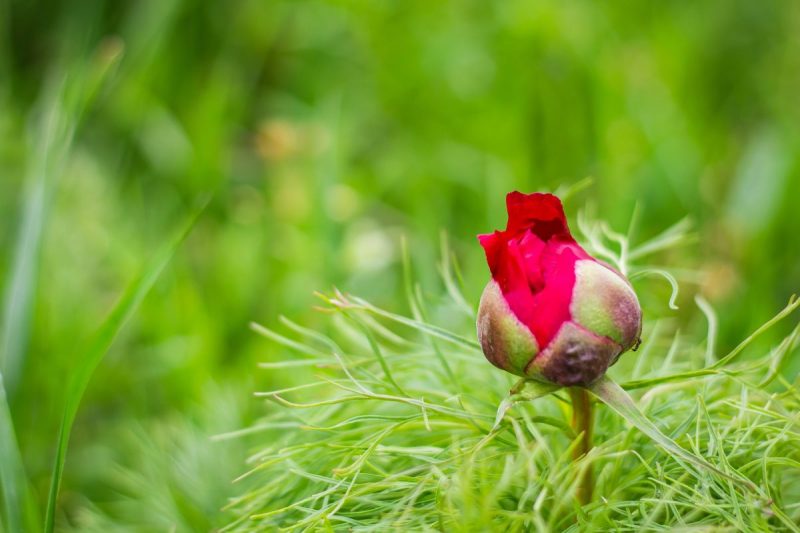
Environmental conditions
Light. The peony prefers sunny places, but also tolerates partial shade. In the shade it grows weakly and does not bloom, sometimes it even dries.
Temperature. It is a resistant species in terms of climatic conditions. It can withstand both the negative temperatures during the winter and the very high temperatures during the summer.
Soil. In the case of peony, it is very important that the soil is well drained, because it is a species sensitive to excessive water or water stagnation in the soil. At the same time, the soil must have the capacity to retain the water. It vegetates well on fertile soils, with low alkaline, neutral or slightly acidic pH.
Care
Water. During the vegetative growth period, peonies are relatively resistant to the lack of water in the soil, but occasional watering is recommended during the dry period. More important it is to ensure a sufficient amount of water in early autumn, when the flower buds are formed for the following year. During irrigation, the water should not touch the leaves, but only be done at the ground level.
Fertilization. For vigorous growth and abundant flowering, it is recommended to apply specific fertilizers during the vegetative growth period.
Recommended products
-
You can find products on a different store
Change Store -
You can find products on a different store
Change Store -
You can find products on a different store
Change Store -
You can find products on a different store
Change Store -
You can find products on a different store
Change Store -
You can find products on a different store
Change Store -
You can find products on a different store
Change Store -
You can find products on a different store
Change Store -
You can find products on a different store
Change Store -
You can find products on a different store
Change Store -
You can find products on a different store
Change Store -
You can find products on a different store
Change Store -
You can find products on a different store
Change Store -
You can find products on a different store
Change Store -
You can find products on a different store
Change Store -
You can find products on a different store
Change Store -
You can find products on a different store
Change Store -
You can find products on a different store
Change Store -
You can find products on a different store
Change Store -
You can find products on a different store
Change Store -
You can find products on a different store
Change Store -
You can find products on a different store
Change Store -
You can find products on a different store
Change Store -
You can find products on a different store
Change Store
Pruning. The withered stems and leaves can be removed at any time of the year, the cutting being done above a viable bud (internode) or at the soil surface. For bouquets or floral arrangements, floral stems can be cut from various heights, using a sharp cutting tool (scissors or knife). It is recommended to avoid cutting the floral stems in the first 2-3 years after planting.
Recommended products
-
You can find products on a different store
Change Store -
You can find products on a different store
Change Store -
You can find products on a different store
Change Store -
You can find products on a different store
Change Store -
You can find products on a different store
Change Store -
You can find products on a different store
Change Store -
You can find products on a different store
Change Store -
You can find products on a different store
Change Store -
You can find products on a different store
Change Store -
You can find products on a different store
Change Store -
You can find products on a different store
Change Store -
You can find products on a different store
Change Store -
You can find products on a different store
Change Store -
You can find products on a different store
Change Store -
You can find products on a different store
Change Store -
You can find products on a different store
Change Store -
You can find products on a different store
Change Store -
You can find products on a different store
Change Store -
You can find products on a different store
Change Store -
You can find products on a different store
Change Store -
You can find products on a different store
Change Store -
You can find products on a different store
Change Store -
You can find products on a different store
Change Store -
You can find products on a different store
Change Store
Planting. The recommended period for planting peonies is from August to October, before the soil freezes. Peony is a very vigorous plant, but sensitive to transplanting, so it is recommended to ensure the necessary space at maturity from the beginning: 0.5-1 sqm / plant.
Recommended products
-
You can find products on a different store
Change Store -
You can find products on a different store
Change Store -
You can find products on a different store
Change Store -
You can find products on a different store
Change Store -
You can find products on a different store
Change Store -
You can find products on a different store
Change Store -
You can find products on a different store
Change Store -
You can find products on a different store
Change Store -
You can find products on a different store
Change Store -
You can find products on a different store
Change Store -
You can find products on a different store
Change Store -
You can find products on a different store
Change Store -
You can find products on a different store
Change Store -
You can find products on a different store
Change Store -
You can find products on a different store
Change Store -
You can find products on a different store
Change Store -
You can find products on a different store
Change Store -
You can find products on a different store
Change Store -
You can find products on a different store
Change Store -
You can find products on a different store
Change Store -
You can find products on a different store
Change Store -
You can find products on a different store
Change Store -
You can find products on a different store
Change Store -
You can find products on a different store
Change Store
Propagation. The peony can be propagated by germination, from seeds, respectively by vegetative means, by dividing the bush, by layering or from root suckers. The method of dividing the bush is most often used. The optimal period for this operation is in August.
Recommended products
-
You can find products on a different store
Change Store -
You can find products on a different store
Change Store -
You can find products on a different store
Change Store -
You can find products on a different store
Change Store -
You can find products on a different store
Change Store -
You can find products on a different store
Change Store -
You can find products on a different store
Change Store -
You can find products on a different store
Change Store -
You can find products on a different store
Change Store -
You can find products on a different store
Change Store -
You can find products on a different store
Change Store -
You can find products on a different store
Change Store -
You can find products on a different store
Change Store -
You can find products on a different store
Change Store -
You can find products on a different store
Change Store -
You can find products on a different store
Change Store -
You can find products on a different store
Change Store -
You can find products on a different store
Change Store -
You can find products on a different store
Change Store -
You can find products on a different store
Change Store -
You can find products on a different store
Change Store -
You can find products on a different store
Change Store -
You can find products on a different store
Change Store -
You can find products on a different store
Change Store
Diseases and pests. The health of the peonies can be affected by the attack of various insects (mites, thrips, aphids, larvae of moths and butterflies, etc.) or by the presence of pathogens that cause diseases (rot, stains, powdery mildew, etc.). It is recommended to carry out preventive and control treatments with specific insecticides and fungicides.
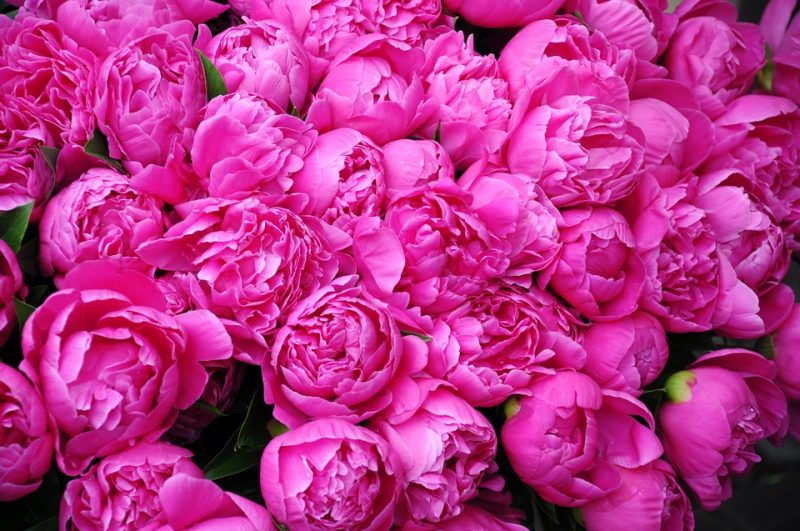



Additionally:
- Once planted, peonies bloom annually, without requiring special care.
- Peonies need low temperatures in winter. Otherwise, the plants vegetate poorly and do not bloom.
- Parts of peonies are used in the pharmaceutical industry (especially the roots).
- Peony is considered toxic, avoid consuming plant parts!
- The mountain peony (rhododendron) is a woody, shrubby species, completely different from garden peonies, belonging to the botanical family Ericaceae, genus Rhododendron.














































































































































































































































































































































































































































